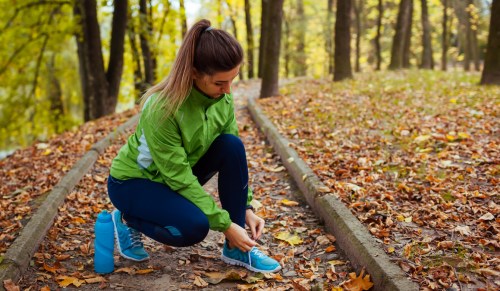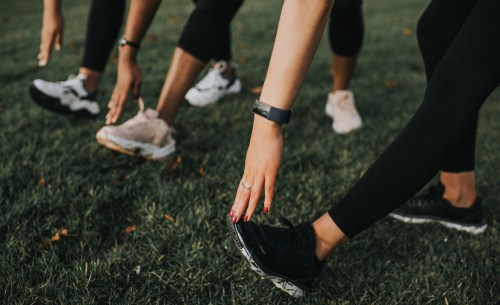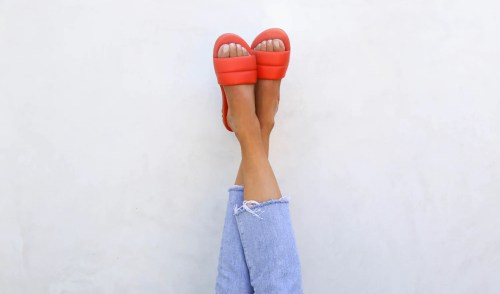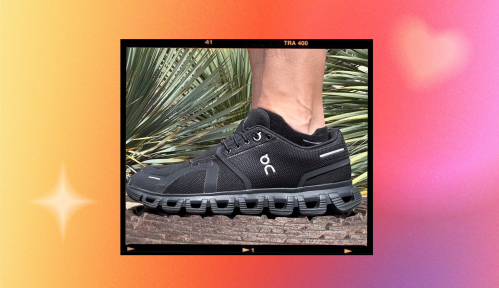Our editors independently select these products. Making a purchase through our links may earn Well+Good a commission
Good hip health is key to mobility with ease—and without pain. You may or may not think about your hips a ton, but the truth is that they provide a strong foundation for our arms and legs, offer balance, and keep us moving. Since we’re constantly using them, it’s not uncommon to experience hip pain from time to time.
Experts in This Article
podiatrist and foot and ankle surgeon at the Center for Advanced Orthopedics
podiatrist and member of the Vionic Innovation Lab
board-certified podiatrist and founder of Step Up Footcare in New York City
podiatric surgeon at Michigan Avenue Podiatry
Unfortunately, this kind of pain can make any type of movement, be it walking, running, or stretching, into a painful undertaking. However, if you’re experiencing hip pain more frequently, this could indicate that you’re in need of new shoes. (If the pain is consistent, we also recommend making an appointment with your GP, an orthopedic doctor, or healthcare provider, since it’s important to rule out injuries or underlying issues.)
Best shoes for hip pain, at a glance
- Best overall: Altra Running Via Olympus 2, $165
- Best for trails: Allbirds Trail Runners SWT, $140
- Best for low-impact workouts: Rykä Influence Training Shoe, $80
- Best for training: Under Armour UA Tribase Reign 6 Training Shoes, $130
- Best for walking: Vionic Fortune Sneaker, $144
- Best for stability: New Balance 928v3, $155
- Best for shock absorption: Asics Gel-Kayano 31, $165
- Best for excessive pronation: Brooks Adrenaline GTS 23, $140
- Best splurge: Mephisto Karin Sneaker, $250
What causes hip pain?
Pain can originate from alignment issues stemming from the feet and can be “caused by faulty biomechanics during walking or activity,” says Nelya Lobkova, DPM, a New York-based podiatrist and podiatric surgeon. “If the feet are not transferring ground reaction forces properly up the chain, alignment is thrown off and hip joint concerns arise,” she adds. Hip pain can also be exacerbated by frequent sitting, sleeping on the same side, or hitting the gym too hard. Without the proper footwear, shoes for hip pain can negatively impact how our hip joints respond to impact every time our feet hit the ground.
What to look for in a shoe for hip pain
Before tapping your credit card, there are a few things podiatrists want you to know about shoes for hip pain. For starters, as with the best shoes for balance, you’ll want to look for shoes with more support. Arch supportive soles “help to hold the foot and ankle in a straighter position, which helps to better align the leg and the hip,” explains Damian Roussel, DPM, FACFAS, a podiatrist and foot and ankle surgeon at the Center for Advanced Orthopedics.
Midsoles matter, too, and Dr. Lobkova recommends a more flexible shoe—which decreases the amount of dorsiflexion and plantar flexion in the foot. To tell if your shoe is flexible enough, aka can do a cartwheel, twist the shoe at the center. If it can be twisted, it’s deemed flexible enough. Lastly, look for a rubber or durable outsole. The flexibility that rubber offers can stabilize and prevent overload on your joints.
We chatted with three podiatrists and rounded up their shoe recommendations for when you’re dealing with hip pain. Check out these podiatrist-approved shoes for that’ll have you curbing aches and pains.
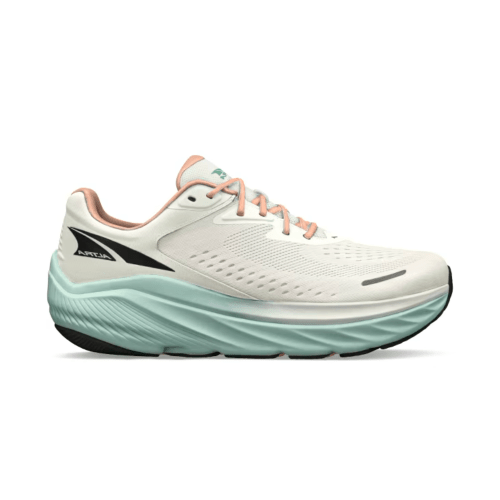
Best overall: Altra Running Via Olympus 2 — $165.00
Sizes available: 5.5-12
Thick and cushioned, this lightweight shoe has a low heel-to-toe drop—which means that there will be less overall impact. “They also have a wide toe box and good traction on the outsole to minimize instability and increase proprioception, which in turn, will decrease the loading forces on the hip joint,” Dr. Lobkova explains. Walk, run, jog—hip pain is no match for Altra Running’s Via Olympus.
Colors: 5
Pros:
- Lightweight
- Cushioned
- Thick sole
Cons:
- Expensive

Best for trails: Allbirds Trail Runners SWT — $140.00
Sizes available: 5-11
Flexible shoes are ideal for hip pain, and these Allbirds are just what you need to tackle the pavement. Recommended by Dr. Lobkova, these seven millimeter heel-to-toe drop kicks provide all-terrain traction, so you can run just on about any surface: trail, road, or grass. They’re also made of a water-repellent finish to keep your shoes and feet soggy-free.
Colors: 5
Pros:
- Flexible
- Water-repellent
- Good traction
Cons:
- Narrow toe box

Best for low-impact workouts: Rykä Influence Training Shoe — $80.00
Sizes available: 5-12 (available in medium and wide widths)
Featuring a shape retention cushioning, these shoes were made for dance, and other low-impact activities like walking. It has a breathable mesh to keep things breezy whenever you’re busting a sweat. Plus, the shoe boasts a lace-up front to tailor to every foot shape. “I like the lightweight aspect and the traction in their Pivot Point which aids in joint stability while walking and doing activities,” says Dr. Lobkova.
Colors: 1
Pros:
- Roomy feel
- Breathable
- Lace-up design
Cons:
- Low-impact activities only

Best for training: Under Armour UA Tribase Reign 6 Training Shoes — $130.00
Sizes available: 5-12
What makes Under Armour’s Reign 6 training shoes ideal for hip pain is the responsive foam cushioning and rubber outsole that offers maximum flexibility. Because of these features, Dr. Lobkova says this shoe “would be an ideal choice for someone with severe hip pain and or severe osteoarthritis of the hip joint.” Your balance just got a whole lot more stable with these pair of kicks.
Colors: 3
Pros:
- Cushioned
- Flexible
- Low to the ground
Cons:
- Expensive

Best for walking: Vionic Fortune Sneaker — $144.00
Sizes available: 5-9
Vionic comes recommended by Jacqueline Sutera, DPM, a board-certified podiatrist and Vionic Innovation lab member based in New York and New Jersey. Not only are the brand’s shoe designed by podiatrists, they’re lightweight and supportive like this Fortune Sneaker. The cushioned midsole and breathable mesh make this pair ideal for walking. Also nice? It comes in three colors: white, gray, and blue. It’s stylish meets sporty.
Colors: 3
Pros:
- Lightweight
- Breathable
- Has a durable, rubber outsole
Cons:
- Expensive
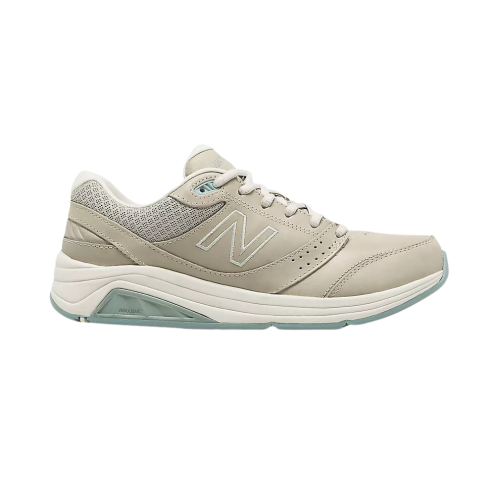
Best for stability: New Balance 928v3 — $155.00
Sizes available: 5-13 (available in narrow, standard, wide, x-wide, and xx-wide widths)
Zane Qureshi, DPM, a Chicago-based podiatric surgeon at Michigan Avenue Podiatry, recommends the New Balance 928v3 for its foot-friendly features. “This shoe has a cushioned sole and good arch support, making it a great option for people with hip pain,” Dr. Qureshi says. Even more, it boasts a foam footbed, providing comfort and additional stability and support.
Colors: 3
Pros:
- Supportive
- Stabilizes feet
- Leather outer
Cons:
- Expensive

Best for shock absorption: Asics Gel-Kayano 31 — $165.00
Sizes available: 5-13
Another Dr. Qureshi recommendation, the Asics Gel-Kayano 31 features “gel-cushioning in the heel and forefoot, as well as a supportive fit, making it a great option for people with hip pain.” For people who overpronate, this shoe is ideal because it’s engineered to absorb shock and distribute the push off from the front of the foot. The knit upper keeps this shoe breathable and lightweight in design. The days of heavy running shoes and hip throbs are numbered with these kicks.
Colors: 11
Pros:
- Designed for overpronation
- Gel cushioning
- Arch support
Cons:
- Expensive

Best for excessive pronation: Brooks Adrenaline GTS 23 — $140.00
Sizes available: 5-13 (available in narrow, medium, wide, and x-wide widths)
If you’re finding yourself excessively pronating, Casey Pidich, DPM, a New York-based podiatrist, suggests Brooks Adrenaline GTS 23. Not only does the well-designed heel counter provide adequate stability, these kicks “help prevent excessive pronation for a smoother gait and, ultimately, less impact on the hips,” she says. They’re the perfect shoes to get moving again.
Colors: 23
Pros:
- Designed for excessive pronation
- Has less impact on the hips
- Rocker-like sole
Cons:
- May be too narrow for some

Best splurge: Mephisto Karin Sneaker — $250.00
Sizes available: 6.5-11
Shoes are an investment, and Dr. Pidich recommends Mephisto’s Karin Sneaker. While on the more expensive side, “this sneaker is excellent for walking. It’s stylish [and] made in France with high-quality materials” like leather and a shock-absorbing outsole, says Dr. Pidich. Plus, the shoes have got a rigid tread for ultimate traction.
Colors: 8
Pros:
- Made of high-quality materials
- Recommended for walking
- Provides traction
Cons:
- Only available in two colors
- Expensive
Sign up for the Well+Good SHOP Newsletter
Get exclusive deals on wellness, beauty, fitness, and food products that have been hand-picked by our editors.
Got it, you've been added to our email list.
